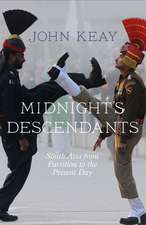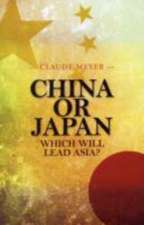Sacred Traces: British Explorations of Buddhism in South Asia: Histories of Vision
Autor Janice Leoshkoen Limba Engleză Hardback – 28 feb 2003
Preț: 764.69 lei
Preț vechi: 1027.70 lei
-26% Nou
Puncte Express: 1147
Preț estimativ în valută:
146.32€ • 153.18$ • 121.07£
146.32€ • 153.18$ • 121.07£
Carte tipărită la comandă
Livrare economică 05-19 aprilie
Preluare comenzi: 021 569.72.76
Specificații
ISBN-13: 9780754601388
ISBN-10: 0754601382
Pagini: 184
Ilustrații: Includes 59 b&w illustrations
Dimensiuni: 169 x 244 x 17 mm
Greutate: 0.48 kg
Ediția:New ed
Editura: Taylor & Francis
Colecția Routledge
Seria Histories of Vision
Locul publicării:Oxford, United Kingdom
ISBN-10: 0754601382
Pagini: 184
Ilustrații: Includes 59 b&w illustrations
Dimensiuni: 169 x 244 x 17 mm
Greutate: 0.48 kg
Ediția:New ed
Editura: Taylor & Francis
Colecția Routledge
Seria Histories of Vision
Locul publicării:Oxford, United Kingdom
Cuprins
Contents: Preface; Introduction; On studying Indian Buddhist art; Identifying the sacred geography of Indian Buddhism; Determining the images of sacred Buddhist geography; Defining the later images of eastern India; A postcript on seeing sacred images; Bibliography; Index.
Recenzii
'The book is a valuable contribution to the emerging body of literature that examines approaches to material culture in order to reassess the British encounter with South Asia.' Pika Ghosh, CAA Reviews
'... slim, elegantly produced, amply illustrated monograph by a scholar who is a specialist on the Buddhist art and architecture of eastern India.' Tapati Guha-Thakurta, South Asian Studies
'... slim, elegantly produced, amply illustrated monograph by a scholar who is a specialist on the Buddhist art and architecture of eastern India.' Tapati Guha-Thakurta, South Asian Studies
Descriere
In his novel Kim, in which a Tibetan pilgrim seeks to visit important Buddhist sites in India, Rudyard Kipling reveals the nineteenth-century fascination with the discovery of the importance of Buddhism in India's past. Janice Leoshko, a scholar of South Asian Buddhist art uses Kipling's account and those of other western writers to offer new insight into the priorities underlying nineteenth-century studies of Buddhist art in India. In the absence of written records, the first explorations of Buddhist sites were often guided by accounts of Chinese pilgrims. They had journeyed to India more than a thousand years earlier in search of sacred traces of the Buddha, the places where he lived, obtained enlightenment, taught and finally passed into nirvana. The British explorers, however, had other interests besides the religion itself. They were motivated by concerns tied to the growing British control of the subcontinent. Building on earlier interventions, Janice Leoshko examines this history of nineteenth-century exploration in order to illuminate how early concerns shaped the way Buddhist art has been studied in the West and presented in its museums.












